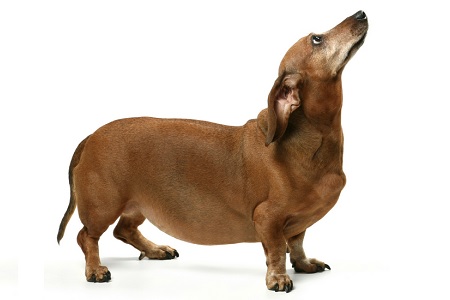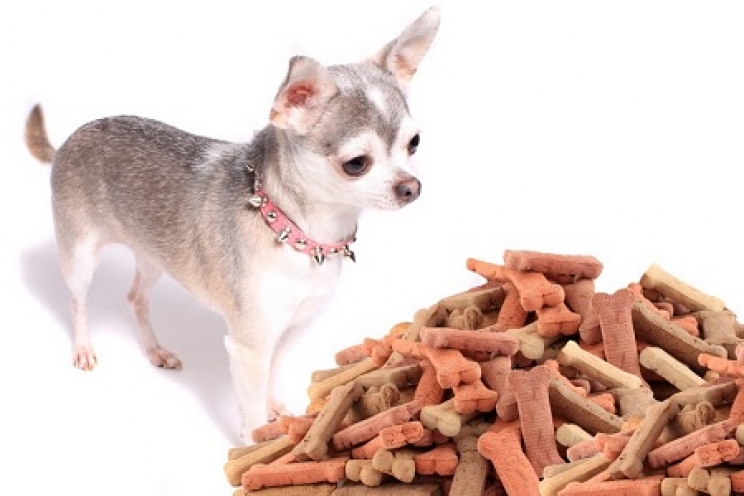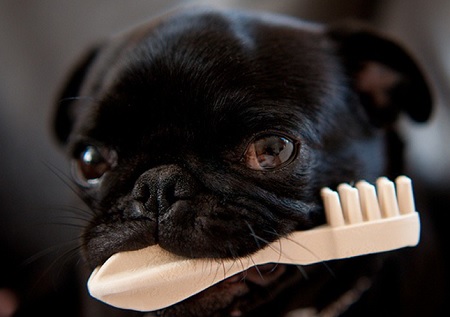Do you know that the right diet must also take into account the size of the animal? For this reason, the most important companies in the dog feeding sector are developing feed specifically designed for small dogs and toy size.
What do small dogs need?
For us humans the difference is not easy to see, considering that, apart from some small variations in height and physical appearance, it is rare to find very tall and very short people. In the world of dogs, however, all this is really common. Each breed or cross, in fact, has approximately a precise size, which allows us to distinguish between:
- Toy breeds: these are the classic "handbag" dogs, weighing no more than 4 kg;
- Small or mini size: dogs of “contained” size, between 4 and 10 kg in weight (Pekingese, Shih Tzu, Yorkshire Terrier, Pug, French Bulldog and many others);
- Medium size: dogs with an intermediate size, weighing 11-25 kg (Beagle, Cocker Spaniel, Bulldog, Chow Chow, Shar Pei, Schnauzer and most hounds);
- Large size: between 26 and 44 kg in weight (Boxer, Dobermann, Labrador, German Shepherd, Basset Hound, Golden Retriever, Dalmatian, for example);
- Giant size: really very large dogs, with a weight exceeding 44 kg (Great Dane, Cane Corso, Bernese Mountain Dog, Neapolitan Mastiff).
As for toy and mini breed dogs, thanks to their small size, they can benefit from greater life expectancy than that of large and giant breed dogs. We speak of over 15 years for smaller dogs, compared to 10-12 years for the older ones.
This, however, does not mean that they require less care. Conversely, some health problems may appear more frequently in some dog sizes than others. In particular, in the field of toy and mini dogs, we find:
-
 Free radicals: a long life exposes even more to the risk of attack by free radicals, which we have all heard of above all through the advertisements of anti-wrinkle creams. In reality, free radicals act by damaging the cells, especially beyond a certain age, determining not only the aging of the skin, but also of the other tissues and organs;
Free radicals: a long life exposes even more to the risk of attack by free radicals, which we have all heard of above all through the advertisements of anti-wrinkle creams. In reality, free radicals act by damaging the cells, especially beyond a certain age, determining not only the aging of the skin, but also of the other tissues and organs; - Delicate teeth and gums: small breed dogs often have irregular teeth, as it happens especially for Pugs and Pekingese. This determines an accumulation of food residues in the spaces between the teeth, leading over time to the formation of plaque and tartar, the number one enemies of the health of teeth and gums. In addition to increasing the risk of caries and gum infections, this problem often also involves bad breath, which in some cases can become really annoying because of the bad smell that comes from the dog's mouth;
- Overweight and obesity: smaller dogs have a higher metabolism than larger dogs. This means that they need more calories - or energy - to carry out daily activities. However, if on the one hand this amount of energy obtained through food is fundamental for the correct functioning of the body, on the other hand it also depends on how much is actually consumed through physical activity. When the intake of calories exceeds consumption, we come across overweight and obesity, with the related health risks;
- Small stomach: these dogs have small dimensions not only on the outside, but also on the inside. Even their organs, in fact, are smaller, starting from the stomach, which does not have the same filling capacity as other bigger dogs.
- Small mouth: for such a small dog, it can be very difficult to take food from the bowl and nibble on croquettes for large breeds. In addition, the strength of the muscles in the jaws is not particularly developed, so they may also find it difficult to chew harder food;
- Difficult tastes: dogs are not particularly known for being picky, unlike cats. Some toy and mini breed dogs, however, may exhibit this feature by selecting food based on their preferences.
What does for small dogs include?
Dog food or a balanced home diet for small dogs and toys must absolutely take into consideration all the factors we have just seen.
First of all, the calorie content must be balanced enough to support their high energy metabolism. However, if we talk about hyperactive dogs, accustomed to long walks and wild runs in the garden, we can allow ourselves the maximum dosage. On the other hand, we will have to consider a reduction in the ration for all the small lazy dogs who sleep most of the time.
Due to the size of the stomach, the meal should be divided into small portions to be offered to the dog during the day. The risk of excessive unnecessary eating is around the corner. We might lead to vomiting episodes after eating too much food compared to the capacity of the stomach.
The food for this range of dogs is often enriched with antioxidant substances, very useful for counteracting the effects caused by free radicals on cells. This helps the body to live longer, avoiding tumours, infections and inflammations.
The problem of halitosis appears above all by following a wet diet, that is, with cans and pates. The croquettes, in fact, thanks to their roughness, manage to partially scratch the food residues and the plaque. In these cases, the use of specific products for oral hygiene may still be advisable, following the advice given in this article. In addition, dry foods for small dogs should also have an appropriate size for their mouth, promoting better chewing habits.











